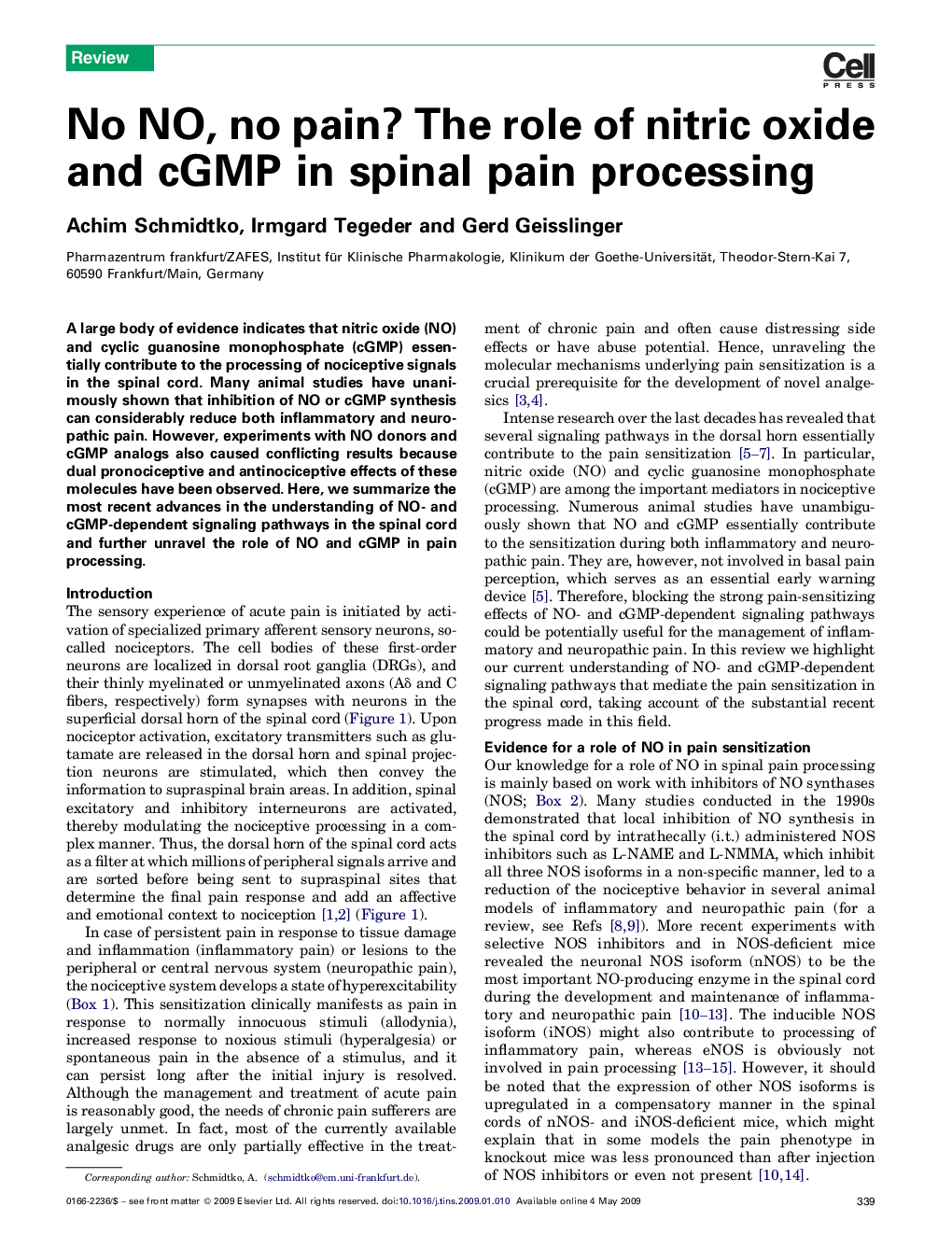| Article ID | Journal | Published Year | Pages | File Type |
|---|---|---|---|---|
| 4354579 | Trends in Neurosciences | 2009 | 8 Pages |
Abstract
A large body of evidence indicates that nitric oxide (NO) and cyclic guanosine monophosphate (cGMP) essentially contribute to the processing of nociceptive signals in the spinal cord. Many animal studies have unanimously shown that inhibition of NO or cGMP synthesis can considerably reduce both inflammatory and neuropathic pain. However, experiments with NO donors and cGMP analogs also caused conflicting results because dual pronociceptive and antinociceptive effects of these molecules have been observed. Here, we summarize the most recent advances in the understanding of NO- and cGMP-dependent signaling pathways in the spinal cord and further unravel the role of NO and cGMP in pain processing.
Related Topics
Life Sciences
Neuroscience
Neuroscience (General)
Authors
Achim Schmidtko, Irmgard Tegeder, Gerd Geisslinger,
